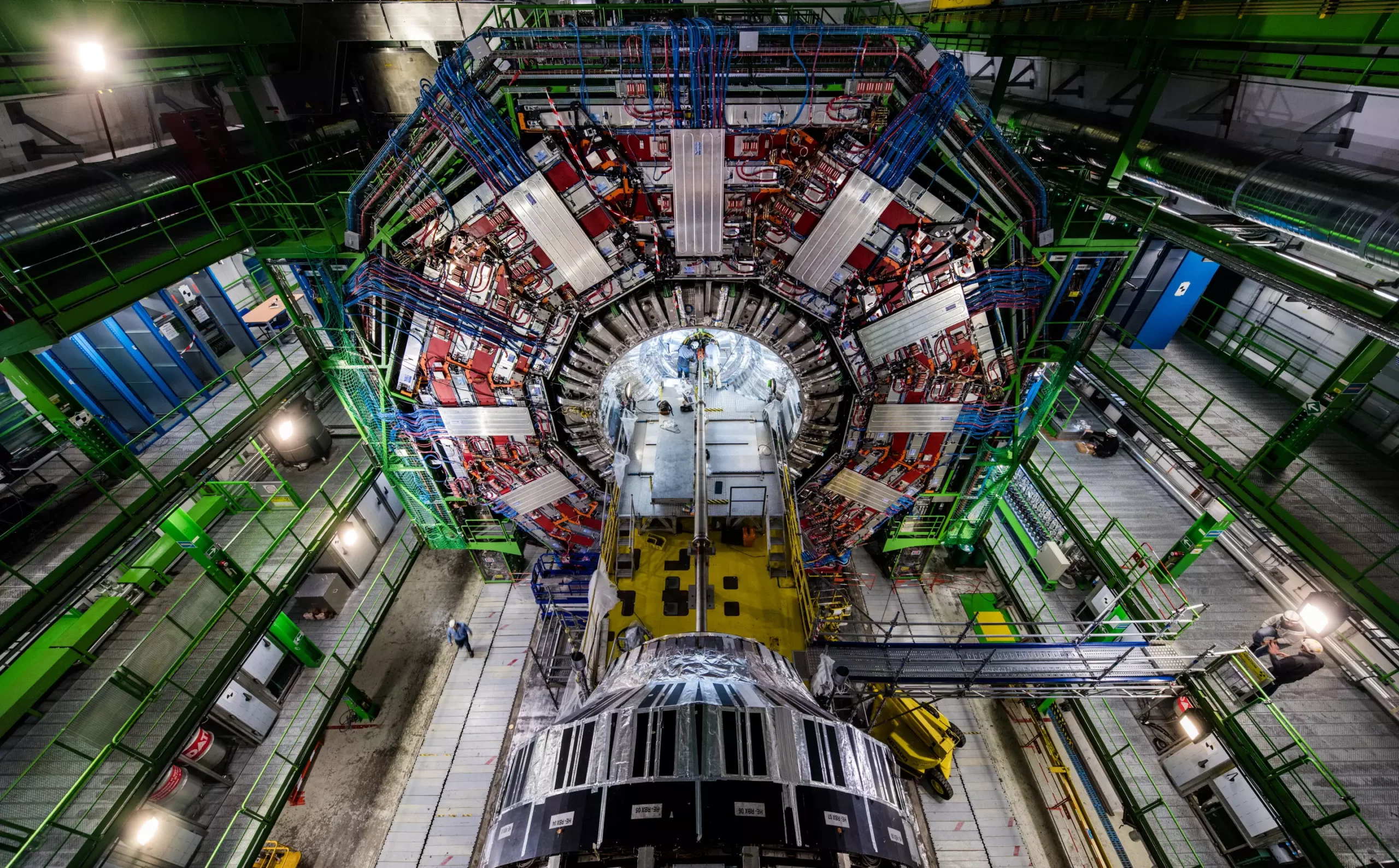The W boson is not just a particle; it plays a vital role in the Standard Model of particle physics, which serves as the foundation for our understanding of the universe’s fundamental forces and particles. Discovered in 1983, the existence of the W boson helped solidify the framework that describes electromagnetic and weak interactions, each having wide-ranging implications from atomic decay to the fundamental behavior of matter. Precisely measuring the mass of the W boson is crucial for scientists, as it enables them to explore various interplays of forces in the universe and investigate potential undiscovered phenomena.
Recently, an exciting development emerged from the Compact Muon Solenoid (CMS) at CERN’s Large Hadron Collider (LHC). Utilizing an innovative approach that culminated years of detailed analysis, the experiment reported a new mass measurement of the W boson. This latest finding comes on the heels of a previous unpredicted measurement from Fermilab’s Collider Detector (CDF) experiment, marking a turning point in particle physics research. By analyzing a staggering 300 million real collision events alongside 4 billion simulated occurrences from the LHC’s 2016 data set, CMS scientists meticulously reconstructed and gauged the mass from over 100 million W bosons.
The resultant mass estimated at 80,360.2 ± 9.9 megaelectron volts (MeV) aligns well with the theoretical predictions of the Standard Model, which posits a mass of 80,357 ± 6 MeV. The precision of this measurement is noteworthy, given that it equates to the astonishing accuracy of measuring the length of a 4-inch pencil to within 0.0008 inches. This achievement signifies a crucial step in laying to rest years of uncertainty surrounding the W boson.
The road to this groundbreaking measurement was littered with challenges. One of the significant difficulties in gauging the W boson’s mass originates from its decay process. Unlike some of its counterparts, such as the Z boson, which disassembles into easily detectable particles, W bosons decay into a neutrino and a charged lepton—making the situation particularly complicated. Neutrinos possess minimal interaction with matter, often leaving scientists with incomplete datasets, which can lead to ambiguous outcomes.
To address this issue, the CMS collaboration relied heavily on simulations. The team executed advanced algorithms to model LHC collisions that accounted for every conceivable variable influencing their results. According to researcher Josh Bendavid from MIT, this required immense creativity and a nuanced understanding of the behavior of particles, compounding the inherent complexities involved in these measurements.
One key factor contributing to the success of the CMS experiment is its state-of-the-art design. CMS employs a robust configuration combining advanced sensors specifically engineered for discerning fundamental particles, coupled with a high-performance solenoid magnet that effectively alters the trajectories of charged particles. This arrangement offers a remarkable advantage when engaging in precision mass measurements. As noted by Patty McBride, a scientist at Fermi National Accelerator Laboratory and a former CMS spokesperson, the instrument’s design is uniquely immersive and equipped to deliver unprecedented levels of accuracy.
Moreover, unlike previous approaches that relied on the Z boson data as a reference point, researchers cultivated a new technique that utilized solely actual W boson data to inform their analysis. This pivotal shift allowed scientists to derive insights with greater reliability, free from potential assumptions that could lead to inconsistencies.
The CMS group’s successful measurement of the W boson’s mass marks a watershed moment for the field of particle physics. The data gleaned from this analysis not only enhances our comprehension of existing models but also opens avenues for probing beyond the Standard Model. Anadi Canepa emphasized the tenuous nature of the universe’s balancing act, noting that deviations between expected and measured W boson mass might signal new mechanics at play.
This new level of precision allows for an expanded toolbox for scientists, prompting further inquiry into phenomena such as the Higgs boson, the interplay of fundamental particles, and potential undiscovered forces or particles. As the experimental physics community digs deeper into these intricate investigations, the quest to weave a coherent tapestry of the universe’s workings continues to unfold, revealing both challenges and singular opportunities to advance scientific knowledge.
The journey to understanding our universe’s most fundamental components is ever-evolving, with the CMS team firmly positioned at the cutting edge of discovery. The sheer determination and ingenuity required to navigate the myriad challenges inherent in this research serve as an inspiration for upcoming generations of physicists dedicated to unearthing even deeper truths about the nature of reality itself.


Leave a Reply